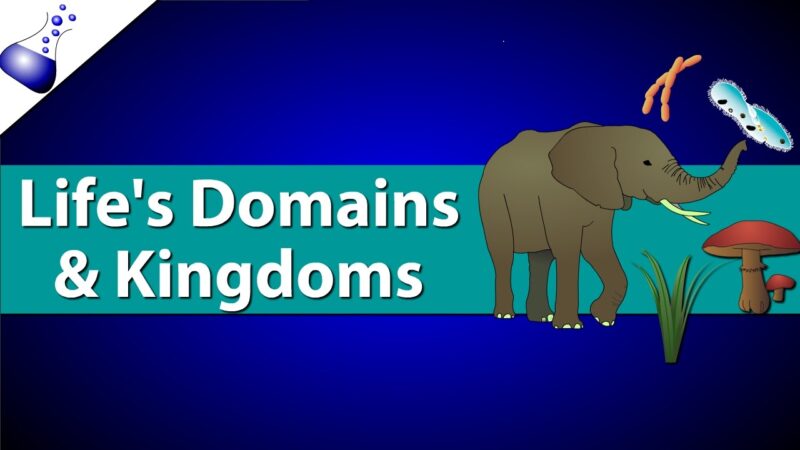domain name meaning Introduction to Domains

Info
Level: Beginner
Presenter: Eli the Computer Guy
Date Created: April 2, 2010
Length of Class: 47 Minutes
Tracks
Servers
Prerequisites
Introduction to Servers
Purpose of Class
This class explains the benefits of using a domain structured network.
Topics Covered
What Domains Are
Basic Concepts for Domains
How Domains are Created
Domain Controllers
Trusts and using Multiple Domains
Class Notes
Introduction
Domains provide an easier way for Administrators to manage Accounts, Permissions and Security for a large network.
Domain Basics
Domain controllers provide access keys to clients to allow or restrict access to network resources
Single place to administer permissions and security
Permissions and Security can be assigned to: Users, Groups, Organization Units
Permissions mean access to shared resources such as files, folders and printers. Security means restrictions about changing desktop background, password policies, access to local drives.
Ways to Have a doming
Windows is the standard type of domain environment
SAMBA — Linux version of a PDC
Novell — Still exists…
You need a business class Windows Operating System to join a domain. XP Pro, Vista Business / Ultimate, 7 Business / Ultimate
Domain Controllers
PDC/ BDC Structure. The PDC has a read and write copy of the security database. If the PDC fails a BDC will provide security information to the network. The BDC has a READ only copy of the database and so administrators cannot change user permissions on a BDC. A BDC can be promoted to a PDC. There is only one PDC in a domain at a time.
Active Directory. All Domain Controllers have read and write access (Theoretically, this can be modified).
Structure
Trusts allow users from one Domain to log on to computer in another Domain. Small offices would never need this. This is for large corporations that own numerous companies. If the Geek from the parent company needs to do work on the computers at the child company a trust relationship between the domains would be created.
There are multiple types of Trusts: One Way, Two Way, Transient
Final Thoughts
Domains are a great tool for large networks, but they require specialized computer technicians and equipment. Depending on the cost/ benefit analysis they may not be a good idea for small networks.
Resources
Novel Open Enterprise Server
SAMBA
Understanding Organizational Units
domain name meaning
Domaining, also known as Domain Investing, is the process of generating revenue from Domain Names. The domain industry began with early investors seeing strong potential in domains long before the general public had become comfortable with the Internet. Soon, some of the initial investors started to see traffic on their names, they didn’t have to do anything besides just buy the domain name – the traffic came to them.
This kind of traffic is known as type-in traffic and comes from people typing the keywords of a domain directly into the URL field in a web browse. Type-in traffic was the strongest in the early 2000’s before Google became the undisputed king of search. Now with more and more people visiting Google or Bing when they are looking for something online this type-in traffic has begun to decline.
Initially Domainers focused on buying names with type-in traffic and then monetizing them by Parking their domains. Parking is the process of easily and instantly getting a page of links on your domain. When someone visits your domain and clicks on a link you get paid. If your name gets thousands of visitors every month this can really start to add up.
Domain flipping is a technique that has become increasingly popular over the last few years. The idea of domain flipping is to take a domain name and either re-sell it for a quick profit or develop it for ongoing income. Either way the idea behind flipping is to quickly convert your domain to money, or a stream of money.
As search engines now control the traffic on the Internet more and more Domainers are focusing on developing their domain names and ranking well in search engines. Having an exact-match domain name for a keyword phrase you are trying to rank well for is a great way to improve your search engine rankings.
If you want to get started with Domaining you might think that all the good names are already taken. You’d be surprised to know that an incredible amount of domains are expiring everyday and you can bid on and purchase them yourself. This could allow you to buy a piece of online property that was bought back in 2002 or 2003 that already has some existing traffic. A domain like this could help you get indexed in search engines and generating more traffic much quicker than a newly registered domain.
What exactly is a domain?
Simply put, a domain name (or just ‘domain’) is the name of a website. It’s what comes after “@” in an email address, or after “www.” in a web address. If someone asks how to find you online, what you tell them is usually your domain name. Examples of domain names are: google.com.
What are the 4 types of domain?
5 Different Types of Domains Available
- Top-Level Domains. Top-level domains are at the top of the internet hierarchy of domain names. …
- Country Code Top Level Domains. Next, on the list, we have country code top-level domains (ccTLD). …
- Generic Top-Level Domains. …
- Second-Level Domains. …
- Third Level Domains.
What are the types of domain?
- Top-Level Domains (TLDs) Each website’s URL can be broken down into different parts. …
- Country Code Top-Level Domain (ccTLD) As we alluded to earlier, there are actually multiple types of TLDs. …
- Generic Top-Level Domain (gTLD) …
- Second-Level Domain (SLD) …
- Third-Level Domain. …
- Premium Domain.
What are computer domains?
A domain, in the context of networking, refers to any group of users, workstations, devices, printers, computers and database servers that share different types of data via network resources. There are also many types of subdomains. … A domain is also used to assign specific resource privileges, such as user accounts.
What is domain explain with example?
When referring to an Internet address or name, a domain or domain name is the location of a website. For example, the domain name “google.com” points to the IP address “216.58. 216.164”. Generally, it’s easier to remember a name rather than a long string of numbers.
What is domain name and its types?
TLDs are classified into two broad categories: generic top-level domains (gTLDs) and country-code top-level domains (ccTLDs). Generic Top-Level Domain (gTLDs) is a generic top-level domain name that identifies the domain class it is associated with (.com, . org, . edu, etc).
How do you write domains?
We can write the domain and range in interval notation, which uses values within brackets to describe a set of numbers. In interval notation, we use a square bracket [ when the set includes the endpoint and a parenthesis ( to indicate that the endpoint is either not included or the interval is unbounded.
What is domain in simple words?
In general, a domain is an area of control or a sphere of knowledge. … Lower levels of domain may also be used. Strictly speaking, in the Internet’s domain name system (DNS), a domain is a name with which name server records are associated that describe subdomains or host.
How many domains are there?
According to this system, the tree of life consists of three domains: Archaea, Bacteria, and Eukarya.
…
Alternative classifications.
| Two empires | Prokaryota / Procarya (Monera) |
|---|---|
| Three domains | Archaea |
| Five kingdoms | Archaea |
| Six kingdoms | Archaebacteria |
| Eocyte hypothesis | Archaea including eukaryotes |
How many different domains are there?
As of now, there are currently 21 generic top-level domains within the root zone, which is the highest level of the domain name system structure. While there are over 1,500 gTLDs in use, these 21 make up the vast majority of all types of domain names.
What are the three domains of?
The Cellular Domains: Archaea, Bacteria, and Eukarya.
What are domains used for?
Domain Names are used for different purposes, including application-specific naming, addressing, and in various networking contexts to establish: Simple identification of hostnames and hosts. Hostnames appear as an element in Uniform Resource Locators (URLs) for Internet resources, such as web sites.
What are the 3 domains of education?
Learning can generally be categorized into three domains: cognitive, affective, and psychomotor. Within each domain are multiple levels of learning that progress from more basic, surface-level learning to more complex, deeper-level learning.
What are the 5 top level domains?
Infrastructure Top-Level Domains
- .com — Commercial businesses.
- org — Organizations (generally charitable).
- net — Network organizations.
- gov — U.S. government agencies.
- mil — Military.
- edu — Educational facilities, like universities.
- th — Thailand.
- ca — Canada.
What is domain physical activity?
In addition to the dimensions of physical activity, the domains in which physical activity occurs are central to understanding the assessment of physical activity. … Four common domains of physical activity are occupational, domestic, transportation, and leisure time.
What are technical domains?
A technical domain is defined as an organized set of technology components based on technology or organizational similarities. … A description of more-specific principles, trends, technologies, standards, products and configuration for each major area included in this domain architecture.
How do Windows domains work?
A Windows domain is a form of a computer network in which all user accounts, computers, printers and other security principals, are registered with a central database located on one or more clusters of central computers known as domain controllers. Authentication takes place on domain controllers.




